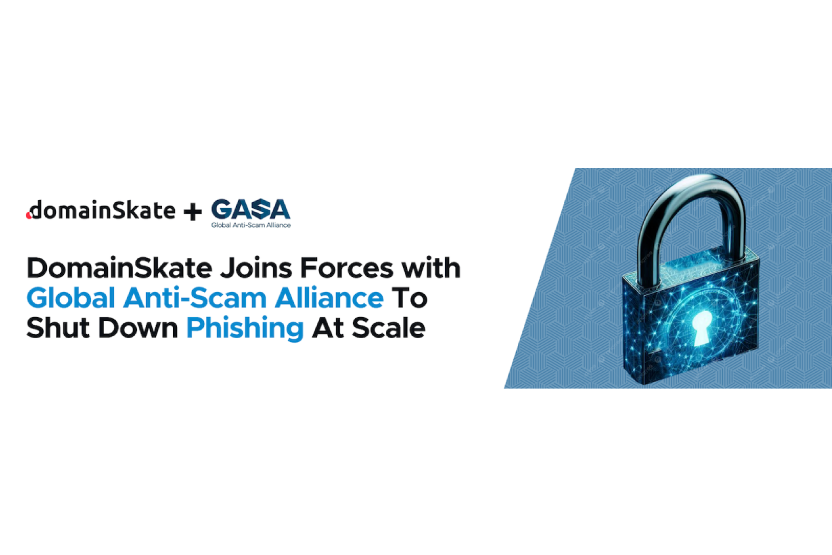So
that brings us to finding domains there. The bad news is, there are 390 million registered domains today that makes for an awful large
list of domains to go look for some of those you’re going to care a lot about some of those. You’re simply not so the trick is in terms of the process that you want to set up for yourself is number one. The search which is
kind of the hard part, which is why we’re going to show you some free tools and some other tools to help you narrow that search down from the long list of all the registered registered domains to just the ones that you care the most about.
Then making a watch list, meaning you’re going to revisit those domains that you’re most concerned about every single day to make sure that nothing pops up in there like like an Mx record or an a record, and I can talk a little bit more about that. And then finally creating an action plan. Okay, so you’ve done all this. You’ve monitored a certain number of domains. And you have found a problem. You have found a Scammer that has simply taken your code and created a very good look
looking website that looks precisely like your legitimate website, except that all those credentials and all that money is going to the Scammer and not to you. Now you need an action plan, and you need a partner to help take that down.
So let’s take first things first. How do you take a list as big as this and try to narrow it down to a manageable number of domains.
So.
first and foremost, you want to go to who is who is.com? Who is net. You can also use your favorite registrar, whether it’s Godaddy or anybody else. And this is where you just start putting in a few of the domains that you are
interested in just understanding the where they are. Are they registered, are they not? Who owns them? And why? So? If I wanted to? If let’s say I was panasonic.
okay? And I wanted to intentionally have a mistype. Panasonic is spelled exactly like this, and the letter right next to the C on my keyboard is a V, so this would be a classic Miss type, the user types A V at the end and not
and not a C at the end.
And we’re going to search that just to see what we find. So it’s unavailable meaning. It’s already registered. So this is an this is a great example of what you would put on your list. So whether you’re keeping track of it in a spreadsheet or something else, this is definitely one of those domains that you want to capture and take a closer look at.
Now you can take deeper dives and and you can contact us if you like, and we can show you how to find out additional details like, for example, where this, how long this domain is registered. For when it expires, who registered at that those types of things
alright.
Other things that you can do. The cybersecurity and infrastructure security agency is also a great place to get a lot of this data in bulk. Now, unfortunately, this requires a little bit more programming capability. So this isn’t something a typical brand manager is going to do. But if you work with Cisa.
you can actually use some of their tools which are programmatic meaning. They’re short programs called Apis, that you would have to integrate into a platform of some kind. So you can pull in the data from them. And you can put it into a list that you can read great tools all free, straight from the Us. Government
and the Sisa organization is awfully good at what they do highly highly recommend it. and there are also some free tools like DomainSkates, threadfinder where you can type in something like panasonic and then find a
panasonic com. You have to have the yeah, URL, and you’ll be able to find just a few of the extensions that that come with this as well.
Now, what I’ve just outlined is an awful lot, right? I mean, you’re basically manually looking for different domains. Use and the free tools. Frankly, don’t make it terribly easy to do that, and making your own watchlist on on a spreadsheet can be effective, depending on the size of your company. But it’s not. It’s not
the. It’s not the most efficient way to do some of these things. So there are tools that will help you tremendously this effort. So here is a look at DomainSkates platform as an example. So.
and just to show you around a little bit. This is listing all of the domains that our system finds. And and we’re using AI, just like the bad guys use AI frankly to look for the best attack. Vectors look for those best, the best domains to use to attack a specific specific brand in this case, panasonic.
Now.
the thing that we that we tend to put up on the top are all the domains that already have a problem reported. So if you notice this column right here, phishing malware, more phishing, fishing, fishing, malware.
All of these domains have been reported as having a problem. So these are the first domains that you want to look at, because you’re now relying on what other people have said is in terms of. They’ve either reported a phishing attack, or they found a malware attack of some kind, a website that’s distributing malware as opposed to just distributing content.
Now, one of the things that jumps out is this particular site, you’ll notice it’s panasonic. with just a little misspelling in the middle. It’s missing the S before the O,
so it’s panasonic again. At first glance. It looks like panasonic, but it’s not. The website
looks awfully legitimate. Clearly they stole this from, if not apple from somebody else. I’m not sure that why they would steal apple, but they have literally made this look exactly like panasonic in every way that they could. But it’s not it forwards somewhere else, and it’s been reported as having a malware on it in the past. This is a problem. So if panasonic were to look at this list, this is exactly the type of thing that they would want to act on and take down as quickly as possible.
And some of the data that we put together for that makes it a lot easier to find. So what you want to be able to do in any tool that gives you these nice organized lists that make it easy to find the problematic domains. You also have to be able to act on these problematic domains at the same time. So in this case, this domain that we were just talking about in the case of DomainSkate, you would click the act button.
click a couple of links. I’m not going to follow through on this now. But this is a suspected phishing attack. It looks like they’re making a lookalike site based on the brand. It’s an alleged violation already. We don’t have more detail than that, but we can dig and find it out, and that’s it. And then you would click the confirm button to actually put that into motion and have a team like ours. Take it down.
So, David, I’m going to stop here for a second and see if there’s anything you wanted to add to to the platform, and how it’s used to find malicious domains.



